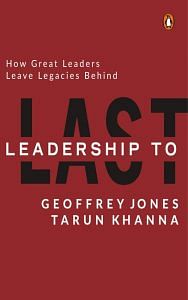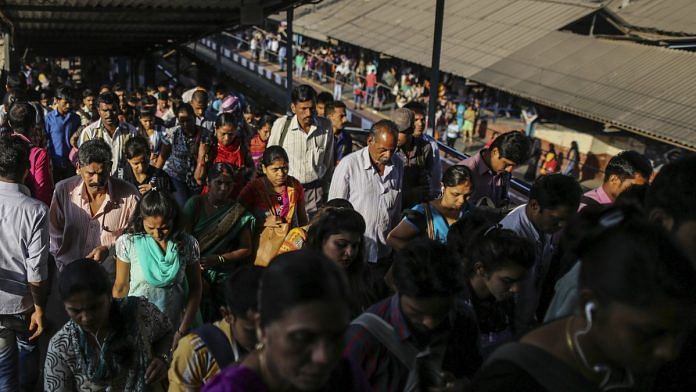Innovation is almost tautologically the key source of firm-level and economy-wide productivity and therefore competitiveness. Some historical accounts attribute the economic lead of the Western world over South Asia, at least in part, to the latter’s insufficient embrace of innovation. The World Intellectual Property Organization ranks countries’ innovation ecosystems. In 2020, India ranked forty-eight out of 131 countries, having improved considerably in the past decade, and far ahead of Bangladesh, Pakistan and other South Asian countries, but still much behind China (ranked fourteen) and the US (ranked third).
Surgeon-entrepreneur Devi Shetty is credited with developing procedures that have resulted in the lowest-priced cardiac surgery in the world, with no diminution in quality relative to the world’s best hospitals. Narayana Health is able to serve its patients profitably and without turning away the indigent for between $1000 [Rs 64,000] and $2000 [Rs 1,29,000], when the same surgery would cost several tens of crores of rupees in the developed world, and maybe more. Shetty’s work over the past two decades or so has been guided by a crystal clear long-run vision. The steadfastness of purpose over profits has—in a theme that finds resonance with many featured in this volume—delivered profits handsomely, as it turns out.
Infosys co-founder Nandan Nilekani’s effort, under the Government of India’s auspices, is an attempt to allow others to create an ecosystem atop the biometric identities that the Aadhaar project has bequeathed to most of India’s residents in less than a decade. This has been a towering technological and logistical achievement, arguably leapfrogging the rest of the world. It also illustrates that the state, even one weighed down by regulations as in independent India, is capable of creating salubrious conditions within which entrepreneurship and creativity can unfold, and at scale.
South Asia and societies of its ilk are characterized by institutional inadequacies that bedevil innovation, but also make its nurturing all the more vital to development.
Also read: Covid isn’t behind us, but the world’s next big health emergency is already here
Devi Shetty
Interviewed by Tarun Khanna in Boston, Massachusetts, on 10 October 2017.
Interviewer: Your most celebrated hospital is the headquarters of the Narayana Group in Bengaluru. Tell us a little bit about how you went through many interventions to make sure that it could accommodate a massive scale of operation. What are some of the key interventions within the hospital—the way surgeries were done, the way you treated patients—that come to mind as being salient?
DS: From the very beginning, we knew the data. That’s very important. So when we designed the hospital, our idea was that we should be able to do sixty major heart surgeries in a day, and six days a week. We don’t have the luxury of taking off on a Saturday. We all work long hours. Today, we do between twenty-seven to thirty-five heart surgeries in a day. The whole hospital is designed for heart, cardiology and cardiac surgery. In that building, we don’t do anything else. So the entire system, starting from the person who receives you at the reception as a porter, they’re all geared for heart care. That helps.
And over a period of time, we got recognition as a cardiac institution. We trained a large number of cardiologists, cardiac surgeons, cardiac anesthetists, so we had a huge number of people who were working long hours there. When you’re an academic institution, your cost of operations goes down significantly, because at any given time we have about thirty- seven to forty young residents undergoing a training programme only in cardiac surgery and you don’t pay them a salary. You pay them a stipend, and they work for you for six years. We also helped the government to run health insurance. So there are multiple things that we have done. You can’t achieve this by doing one thing better. You need to do a lot of things.
Interviewer: The cost of a CABG surgery—coronary artery bypass graft—is so much lower in your Bengaluru hospital than it would be in the West, maybe even two orders of magnitude lower in some ways—a few thousand dollars compared to tens of thousands of dollars, at least. What are the principal drivers that have contributed to lowering that cost?
DS: The first thing is it wasn’t like that when I started my career. Twenty-six or twenty-seven years ago, when I did the first heart surgery, I clearly remember that the patient paid today’s equivalent of $2000 [Rs 1,29,000] for a heart operation. Twenty-six years later, they’re paying $1200 [Rs 77,000]. Nothing in this world, in service, that was $2000 [Rs 1,29,000] twenty-six years ago has come down to $1200 [Rs 77,000] today. It’s only by economy of scale.
Today, we are privileged—about 12 per cent of heart surgeries in India are done by us. The companies that supply products, they look at us differently. And we have converted our hospital into an academic institution. Every hospital we build, we treat it like an academic institution to train young people. And more than anything else, we are very, very conscious of the quality. The cheapest way to produce something is to make it the best in the first attempt.
Learnings from Devi Shetty: Dramatically innovative outcomes are the cumulation of myriads of small changes, each triggered by immersion in the problem, much experimentation and by an uncompromising attitude to quality.
Also read: AI tools can benefit Indian Parliament. Look at how it changed US, Brazil and Europe
Nandan Nilekani
Interviewed by Tarun Khanna in Cambridge, Massachusetts, on 25 September 2017.
Interviewer: What is the difference between an ecosystem developed by government versus a private company? Do the time frames differ?
NN: When you think of private ecosystems done by companies, they happen much faster. Because private companies with especially a stable management can have a clear idea of what they are doing. And do that very quickly. If you look at Apple, it was barely 2001 when Steve Jobs talked about the digital lifestyle, and if you go back to his speech which he gave at MacWorld in January 2001, he talked about a future where it was going to be a digital lifestyle where you used a camera on your personal computer [PC] and so forth, and in some sense in that speech you had elements of the iPod, which came two years later, you had the iPhone, which came in 2007, you had the iPad—so he had a vision of what that digital lifestyle would look like and he had ten to twelve years to roll that out.
So similarly if you look at Facebook and the goal to connect everybody, they were about to connect 100 crore users in ten years. So private companies can focus on something and they can come out with a vision. They can actually stick to the vision very well. So you have a government ecosystem that takes a long time because you know . . . several events happen, and you can have private systems that build quickly.
What we were trying to do was build a hybrid of this— build a government ecosystem but build it in such a way that was premeditated so that in a very short time we were able to actually create scale in the operation, so that makes it a little more complex to do and there were a few principles that we had. The first was that it should be too big to reverse. So, the basic principle is that when you are operating in a political system, the window that you have for driving change is at best five years. Could be more if the same government continues, but you have to assume that things will change. So you have a window of five years to accomplish something and therefore you have to be quick and scale up so quickly that it reaches a size which makes it essentially sustainable. That is why from day one our goal was to have 60 crore people on a system, you know 60 crore is a lot of people on the system so you cannot change that.
The second principle in this whole thing is make sure it’s embedded in as many applications as possible. So the moment you embed it in applications like cash transfers or subsidiary reform or whatever, it automatically gets more in the system. These were some of the principles that we had, which were to create a scale that was essentially irrefutable. We were very fortunate that even though we had a change of government, the new government really adopted Aadhaar in a big way and they are accelerating the usage for cash transfers, for subsidy reform, for attendance systems—they are going to go to a billion users by next year.
I think it goes to show that when you try to build a digital ecosystem in the public world, if you can bring the speed of what is possible in the private world and do it in the public world, the effect you get is a lot of strategic value. And I am very confident that this is actually the basis for a large number of reforms that will happen in India.
Learnings from Nandan Nilekani: Public scientific goods created for one ostensible purpose often have far-reaching applications in unanticipated arenas.
 This excerpt from ‘Leadership to Last: How Great Leaders Leave Legacies Behind‘ has been published with permission from Penguin Random House India.
This excerpt from ‘Leadership to Last: How Great Leaders Leave Legacies Behind‘ has been published with permission from Penguin Random House India.
Disclosure: Infosys Chairman Nandan Nilekani and Co-founder N.R. Narayana Murthy are among the distinguished founder-investors of ThePrint. Please click here for details on investors.






